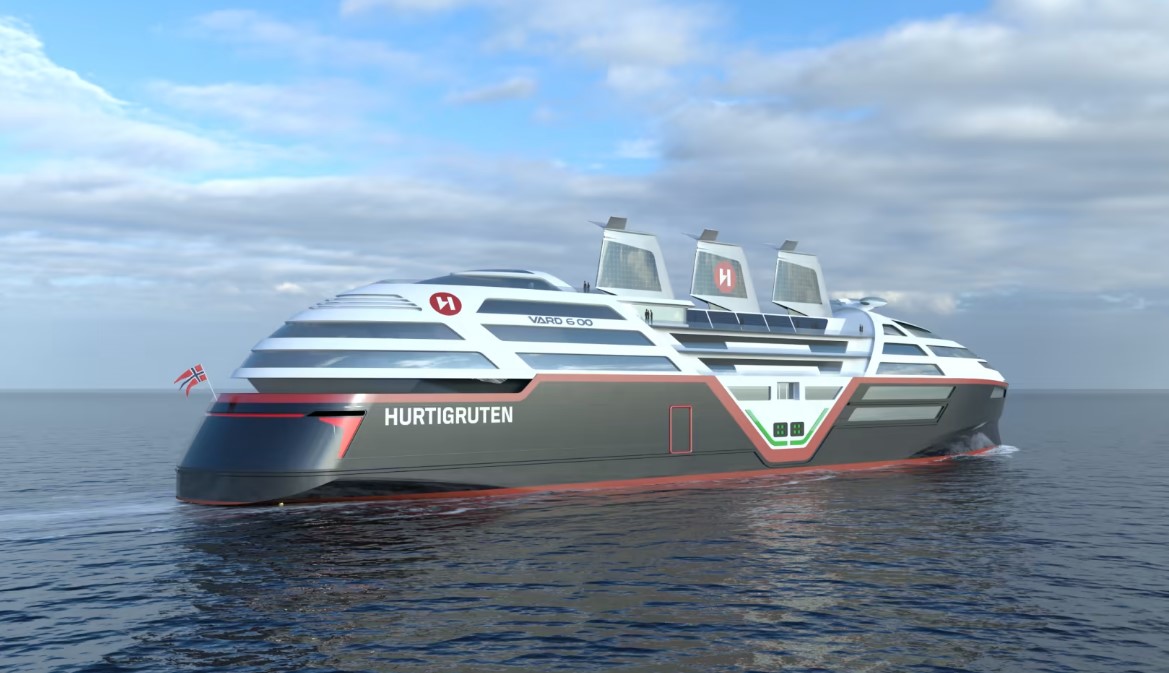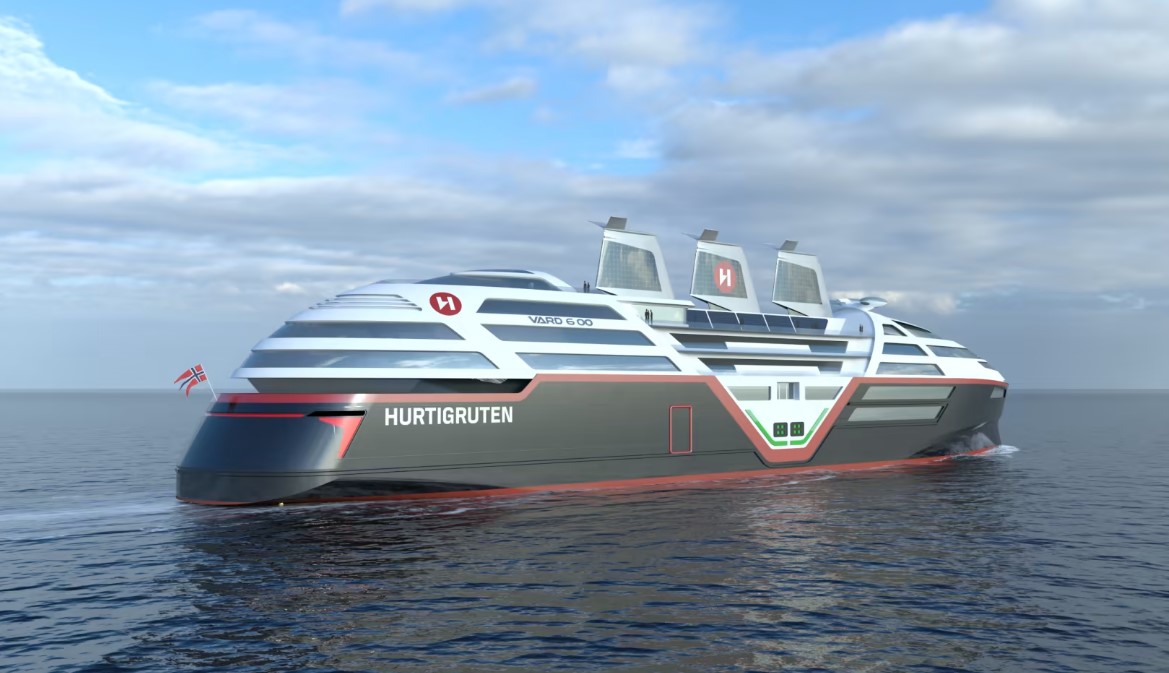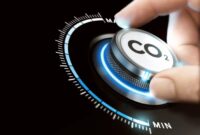Norway hurtigruten zero emission cruise ship retractable solar sails – Norway’s Hurtigruten, a renowned cruise line, is making waves with its ambitious goal of creating a zero-emission cruise ship. This groundbreaking vessel, equipped with retractable solar sails, is a testament to their commitment to sustainable cruising. The ship’s innovative design and technology represent a significant step towards a cleaner future for the cruise industry, tackling the environmental challenges posed by traditional vessels.
The retractable solar sails are a key component of the ship’s zero-emission strategy. These sails, which can be deployed and retracted as needed, harness the power of the sun to generate electricity, reducing the ship’s reliance on fossil fuels. This revolutionary approach, combined with other sustainable technologies, promises to significantly reduce the ship’s carbon footprint and minimize its environmental impact.
Hurtigruten’s Zero Emission Cruise Ship
Hurtigruten, a Norwegian cruise line, is at the forefront of sustainable cruising. The company has made a strong commitment to reducing its environmental impact, setting ambitious goals to achieve carbon neutrality by 2050. One of their most notable initiatives is the development of a zero-emission cruise ship, a groundbreaking project that aims to revolutionize the cruise industry.The significance of this project lies in its potential to drastically reduce the environmental footprint of cruising.
Cruise ships are notorious for their high carbon emissions, contributing significantly to air pollution and climate change. Hurtigruten’s zero-emission ship, if successful, could serve as a blueprint for the future of sustainable cruising, paving the way for a cleaner and greener industry.
Challenges and Opportunities
Developing a zero-emission cruise ship presents numerous challenges and opportunities. The challenges include:
- The need for innovative and reliable zero-emission propulsion systems, such as battery electric or fuel cell technology.
- The development of efficient energy storage solutions, considering the high energy demands of large vessels.
- The need to address the logistical challenges of refueling or recharging the ship, especially in remote locations.
Despite these challenges, the opportunities associated with this project are significant:
- The potential to reduce greenhouse gas emissions and contribute to a cleaner environment.
- The development of new technologies and solutions that could be applied to other sectors of the maritime industry.
- The possibility of creating a new market for sustainable cruising, attracting environmentally conscious travelers.
The Retractable Solar Sails Technology

The retractable solar sails on Hurtigruten’s zero-emission cruise ship are a key component of its sustainable design. These sails are not only visually striking but also play a crucial role in reducing the ship’s reliance on fossil fuels.The solar sails are designed to capture sunlight and convert it into energy, providing a clean and renewable source of power for the ship.
This innovative technology allows the ship to sail with minimal environmental impact, aligning with Hurtigruten’s commitment to sustainability.
The Design and Functionality of the Retractable Solar Sails
The solar sails are made of a lightweight, durable material that can be extended and retracted as needed. When extended, the sails create a large surface area that can capture sunlight. The captured sunlight is then converted into electricity by photovoltaic cells integrated into the sail fabric.The retractable design of the sails allows them to be adjusted based on weather conditions and the ship’s course.
When the sun is shining brightly, the sails can be fully extended to maximize energy capture. In cloudy or stormy weather, the sails can be retracted to minimize wind resistance and protect the ship.
The Contribution of Solar Sails to Zero-Emission Goal
The retractable solar sails significantly contribute to the ship’s zero-emission goal by providing a renewable source of energy. The energy generated by the sails can be used to power various onboard systems, including propulsion, lighting, and air conditioning. By reducing the ship’s reliance on fossil fuels, the solar sails help minimize greenhouse gas emissions and promote a cleaner and more sustainable maritime industry.
Advantages and Limitations of Solar Sails for Propulsion
The use of solar sails for propulsion offers several advantages, including:
- Renewable energy source: Solar energy is a clean and renewable source of power, reducing the ship’s carbon footprint.
- Reduced fuel consumption: Solar sails can significantly reduce the ship’s reliance on fossil fuels, leading to lower fuel costs and emissions.
- Silent operation: Solar sails do not produce any noise pollution, making them ideal for sailing in sensitive marine environments.
However, there are also some limitations to consider:
- Dependence on sunlight: Solar sails are only effective when there is sufficient sunlight. This limits their use in cloudy or nighttime conditions.
- Limited power output: The amount of energy generated by solar sails is dependent on the intensity of sunlight and the size of the sails. This can be a constraint for large ships requiring significant power.
- Wind resistance: Extended sails can create significant wind resistance, potentially slowing down the ship and increasing fuel consumption.
Despite these limitations, the use of solar sails for propulsion is a promising technology with the potential to significantly reduce the environmental impact of maritime transport. As technology continues to evolve, we can expect to see even more innovative and efficient solar sail designs in the future.
Other Sustainable Technologies Employed: Norway Hurtigruten Zero Emission Cruise Ship Retractable Solar Sails
The Hurtigruten zero-emission cruise ship is a marvel of sustainable technology, going beyond retractable solar sails. The ship incorporates a range of innovative solutions to minimize its environmental impact.
Battery Power and Shore Power
The ship is equipped with a powerful battery system that can store energy generated from renewable sources, such as solar panels and onshore power connections. This allows the ship to operate emission-free in ports and while sailing in certain areas.
- Battery Capacity:The ship’s battery system has a substantial capacity, enabling it to operate for extended periods without relying on fossil fuels.
- Shore Power Connections:When docked in ports equipped with shore power facilities, the ship can connect and draw electricity directly from the grid, eliminating the need for onboard generators.
- Reduced Emissions:By utilizing battery power and shore power connections, the ship significantly reduces its greenhouse gas emissions, contributing to cleaner air quality in port cities and coastal areas.
Energy Efficiency Measures
The ship incorporates various energy-efficient technologies and practices to minimize energy consumption.
Discover the crucial elements that make prepare take faa clears way use devices take landing the top choice.
- Optimized Hull Design:The ship’s hull is designed to reduce hydrodynamic drag, minimizing energy required for propulsion. This optimized design contributes to fuel efficiency and reduced emissions.
- Energy-Efficient Lighting:LED lighting is used throughout the ship, consuming significantly less energy than traditional incandescent bulbs. This measure contributes to energy savings and reduces the ship’s carbon footprint.
- Waste Management Systems:The ship has advanced waste management systems in place to minimize waste generation and promote recycling. This reduces the environmental impact associated with waste disposal and promotes sustainable practices.
Operational Aspects of the Zero-Emission Cruise Ship

The operational aspects of Hurtigruten’s zero-emission cruise ship are crucial to achieving its sustainability goals. The ship’s design and technology are carefully integrated to minimize environmental impact, and its planned routes and itineraries are selected to maximize the use of renewable energy sources.
Planned Routes and Itineraries
The ship’s planned routes will focus on the Norwegian coastline, where it will offer scenic voyages and visits to coastal towns and villages. This choice is strategically aligned with the availability of renewable energy sources, such as wind and hydropower, which are abundant in Norway.
The itineraries are designed to minimize the ship’s reliance on fossil fuels by maximizing the use of electric propulsion and solar power.
Minimizing Environmental Impact, Norway hurtigruten zero emission cruise ship retractable solar sails
The ship’s operations are designed to minimize environmental impact in various ways. The use of electric propulsion powered by renewable energy sources eliminates emissions from fossil fuels. The ship’s retractable solar sails contribute significantly to its energy needs, further reducing reliance on external power sources.
Additionally, the ship will utilize energy-efficient technologies, such as LED lighting and optimized hull design, to minimize energy consumption.
Challenges and Solutions for Operating a Zero-Emission Cruise Ship
Operating a zero-emission cruise ship presents unique challenges. One key challenge is ensuring a reliable and sustainable supply of renewable energy. This involves optimizing the ship’s energy management system, utilizing energy storage solutions, and developing partnerships with local energy providers.
Another challenge is the limited range of electric propulsion systems. To address this, the ship’s itineraries will be carefully planned to ensure sufficient charging infrastructure and minimize the need for long voyages relying solely on battery power.
Impact and Future Implications

The introduction of Hurtigruten’s zero-emission cruise ship with retractable solar sails marks a significant step towards a more sustainable future for the cruise industry. This innovative technology holds immense potential for both environmental and economic benefits, paving the way for a greener and more responsible travel experience.
Environmental Impact
The environmental impact of this zero-emission cruise ship is profound. By eliminating greenhouse gas emissions, it contributes significantly to mitigating climate change. The ship’s reliance on renewable energy sources reduces air pollution and noise levels, improving air quality and creating a more pleasant travel experience.
- Reduced Carbon Footprint:The ship’s zero-emission design eliminates the release of harmful greenhouse gases, such as carbon dioxide, methane, and nitrous oxide, directly contributing to a reduction in global warming.
- Improved Air Quality:The absence of exhaust fumes from fossil fuels leads to cleaner air, benefiting both passengers and coastal communities.
- Reduced Noise Pollution:The silent operation of the ship contributes to a quieter travel experience, minimizing disruption to marine life and coastal communities.
Economic Impact
The economic impact of this zero-emission cruise ship extends beyond environmental benefits. It creates new opportunities for the cruise industry, attracting environmentally conscious travelers and opening up new markets.
- Increased Demand:The demand for sustainable travel is on the rise, and this zero-emission cruise ship caters to this growing market, attracting eco-conscious travelers who prioritize sustainability.
- New Market Opportunities:The ship’s innovative design and green credentials open up new market opportunities for Hurtigruten and other cruise operators, allowing them to tap into a niche market of environmentally conscious travelers.
- Reduced Operational Costs:The use of renewable energy sources like solar power can lead to significant reductions in operational costs, making the ship more economically viable in the long run.
Implications for the Future of the Cruise Industry
This project sets a precedent for the future of the cruise industry. It demonstrates the feasibility of zero-emission cruising and encourages other cruise operators to adopt sustainable practices.
- Industry Shift:The success of this project could inspire a shift towards sustainable practices within the cruise industry, leading to a wider adoption of zero-emission technologies and renewable energy sources.
- New Regulations:The introduction of this ship could influence the development of new regulations and standards for the cruise industry, promoting sustainability and environmental responsibility.
- Technological Advancements:The development and implementation of this technology will likely drive further advancements in sustainable ship design and renewable energy solutions for the maritime industry.
Potential for Scaling Up and Replication
The technology employed in this zero-emission cruise ship has the potential to be scaled up and replicated across the industry.
- Adaptable Technology:The retractable solar sails and other sustainable technologies employed in this ship can be adapted to different ship sizes and designs, making them applicable to a wide range of cruise vessels.
- Cost Reduction:As the technology matures and is adopted by more cruise operators, economies of scale will drive down costs, making it more accessible to a wider range of companies.
- Collaboration:The success of this project can foster collaboration among cruise operators, technology providers, and research institutions, accelerating the development and deployment of sustainable solutions for the industry.





